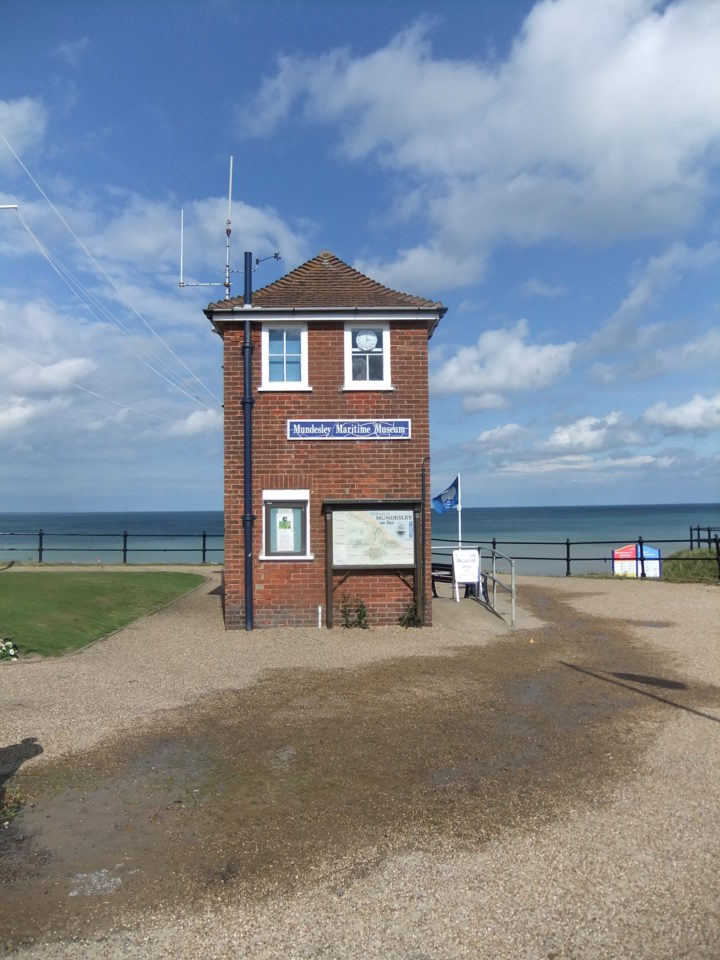As lockdown restrictions were lifted in spring 2021, were there any variations in reopening between accredited and unaccredited museums, or between museums of different sizes?
Briefly, accredited museums were more likely to reopen after lockdown than unaccredited museums, and larger museums were more likely to reopen than smaller museums. Read on to find out more about our results and analysis.
Accreditation
Between March and November 2021, museum websites increasingly mentioned that they were open: a trend that reflects the relaxation of lockdown restrictions. This pattern can be seen in the chart below.

For accredited museums (orange line), mentions of being open rose by 10% (from 49% to 59%). Most of that change took place between April and June 2021, which was around the time that museums could reopen after lockdown. By contrast, mentions of being open rose by just 6% for unaccredited museums (from 40% to 46%). The greater change for accredited museums suggests that they were more likely to reopen than those that are unaccredited.
We can check the data on opening by comparing it with that on closing and, indeed, over this same period museum websites were less likely to mention that they were closed.

The chart above shows the percentage of websites mentioning current closure between March and November 2021. For accredited museums, this declined by 19% (from 77%, to 58% by November 2021). Again, a large part of that change took place between April and June 2021, although the situation was still changing noticeably until September. By contrast, for unaccredited museums mentions of closure on websites declined by just 10% (from 58% to 48%). That smaller decline in mentions of closure again suggests that accredited museums were more likely to reopen than those that are unaccredited.
As described in our previous blog on the relationship between governance and reopening, we also manually checked samples of the text we found on museum websites for statements of closure due to the pandemic. In April 2021 we found that 456 accredited museums explicitly stated that they were closed due to Covid, compared to 268 unaccredited museums.
By September 2021, four months after restrictions had been relaxed, we found that just 64 accredited museum websites still stated they were closed due to the pandemic, a reduction of 86% from April. By comparison, 76 unaccredited museums still stated this, a smaller reduction of 72%. So this analysis further confirms that accredited museums were more likely to have reopened, while unaccredited museums show a lower rate of reopening.
Size
The Mapping Museums database categorises the size of museums according to the number of annual visitors. Huge museums usually receive more than a million visitors a year, large museums between fifty thousand and a million, medium museums between ten thousand and fifty thousand, and small museums less than ten thousand. (read more on how we categorised museum sizes).
As seen in the chart below, museum websites increasingly mentioned that they were open between March and November 2021, and this change differs between museum sizes.

The larger a museum is, the more likely its website was to mention being open as this period progressed. For huge museums (orange line), there was an increase of 25% between March and September 2021 (from 67% to 92%), although this dipped to 83% in November. The sharp fluctuations observed in this group are to be expected when analysing the relatively small sample of twelve museums.
For large museums (blue line), websites using the language of opening had increased by 14% by November 2021 (from 56% to 70%, although it had almost reached that point by June). Medium museums (green line) showed a smaller increase of 10% (from 49% to 59%), and small museums (red line) showed an even smaller increase of 6% (from 39% to 45%).
As for accreditation, we can check the data on opening by comparing it with that on closing. Over the same period, as museums reopened mentions of closure on their websites decreased.

Huge museums showed the biggest reduction in the language of closure (from 100% in March 2021 to 67% by September). One of them, the National Portrait Gallery, closed in 2020 for refurbishment.
The smaller a museum is, the smaller the decline in the language of closure. Large museums declined by 21% (from 83%, to 62% by November 2021), while medium museums declined by 20% (from 76% to 56% by September 2021). Meanwhile small museums showed just an 11% decline (from 60% to 49% by November 2021). That change is about half of that for medium and large museums. This suggests that smaller museums were much less likely reopen than medium, large and huge museums.
To complement these summary analyses, we followed the same process outlined for accreditation by also manually checking samples of website text. In April 2021 we found just one huge museum that explicitly stated that it was closed due to Covid: this was Kelvingrove in Glasgow. There were 133 large museums making a similar statement, 230 medium museums, and 337 small museums.
By September 2021, we found that just 13 large museum websites still stated they were closed due to the pandemic, a reduction of 90% from April. The reduction for medium museums was slightly less at 86%, with 32 still making similar statements. The reduction for small museums was even less at 74%, with 87 still advertising closure. So this analysis of website text also confirms that the smaller a museum is, the less likely it was to have reopened.
Mark Liebenrood



